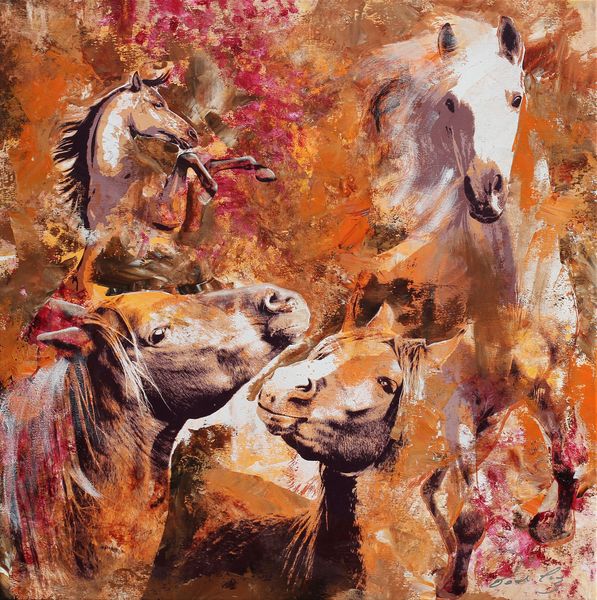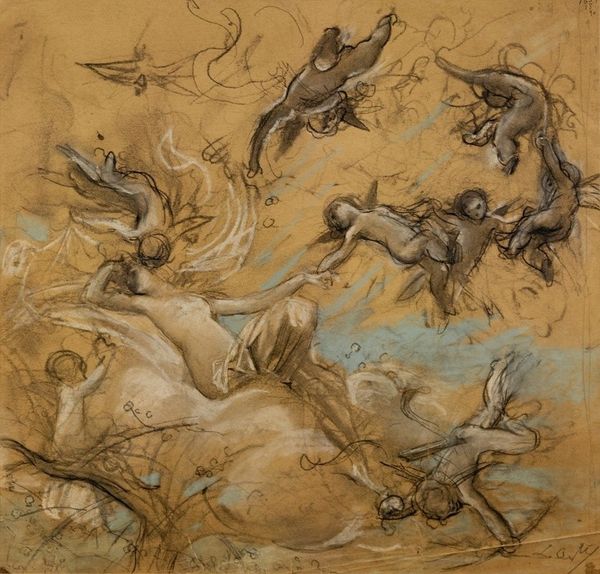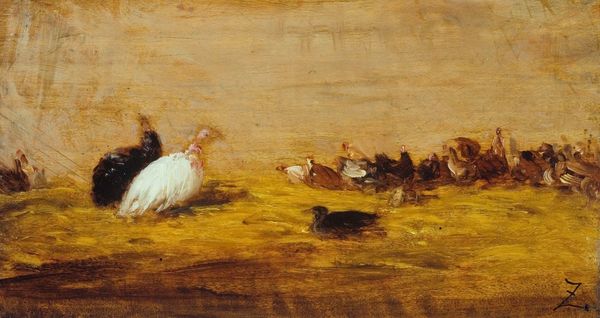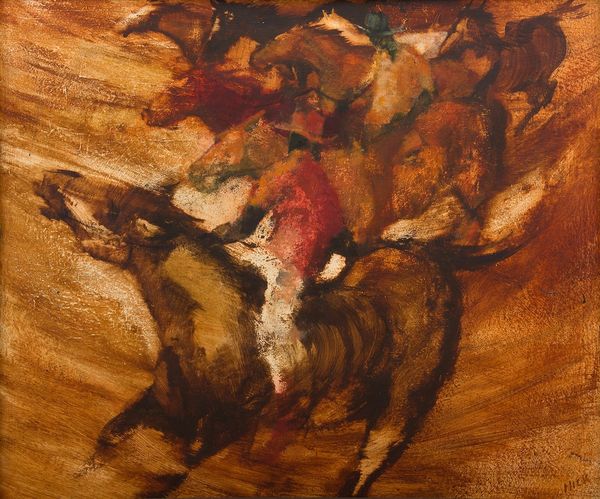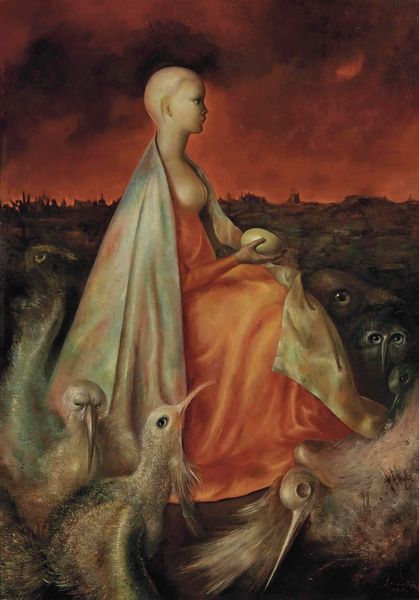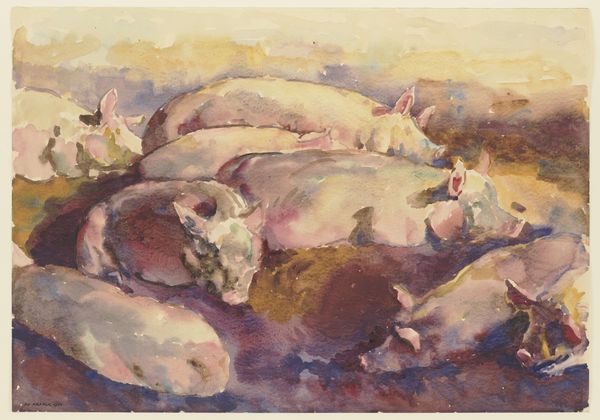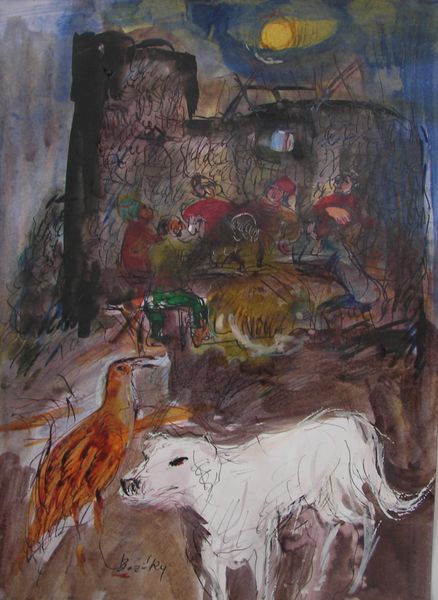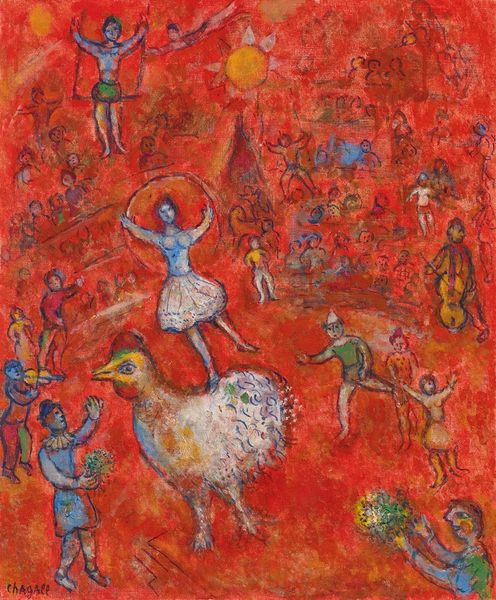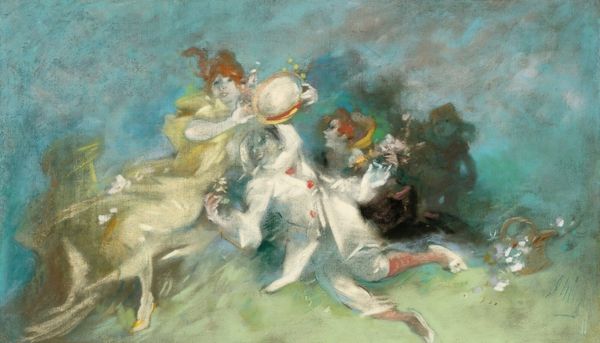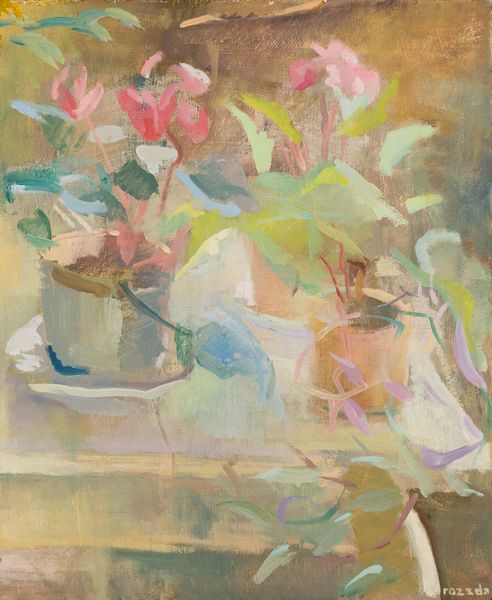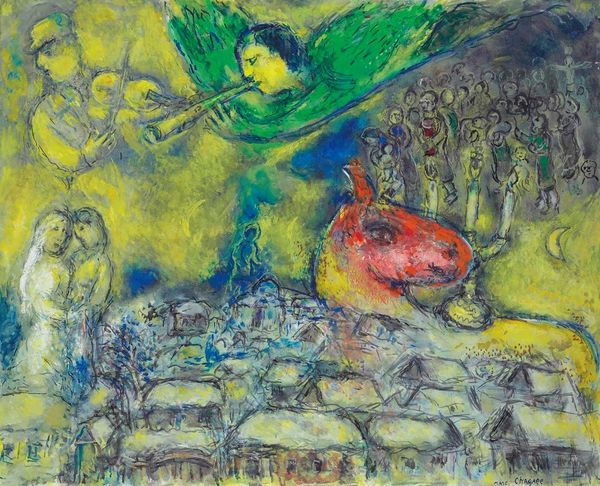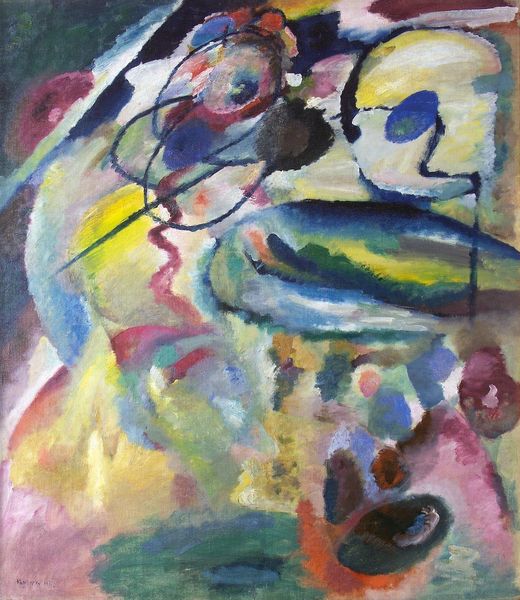
Dimensions: support: 763 x 643 mm
Copyright: © The estate of Mary Fedden | CC-BY-NC-ND 4.0 DEED, Photo: Tate
Editor: Mary Fedden's "The Staffordshire Horse" presents an intriguing still life, with an almost dreamlike quality. How do you see the formal elements working in this composition? Curator: The composition hinges on a fascinating interplay between flatness and depth. Notice how Fedden employs a limited palette, unifying the diverse objects through subtle color harmonies. Editor: Yes, the muted greens and yellows create a sense of cohesion. But the horse, being a sculpture, adds a curious spatial ambiguity. Curator: Precisely. Its placement disrupts the expected recession into space, challenging our perception of perspective and objecthood within the painting. The flat planes of color further emphasize this tension. Editor: It's like a dialogue between representation and abstraction. Thank you for helping me see that! Curator: My pleasure. Recognizing those tensions allows us to engage more deeply with Fedden's unique visual language.
Comments
tate 6 months ago
⋮
http://www.tate.org.uk/art/artworks/fedden-the-staffordshire-horse-t07243
Join the conversation
Join millions of artists and users on Artera today and experience the ultimate creative platform.
tate 6 months ago
⋮
The Staffordshire Horse is one of a small group of early paintings in which Mary Fedden explored what would become her principal genre, the still life with a view beyond, which was already a staple subject of such painters as Winifred and Ben Nicholson and Paul Nash. It was characteristic of these early paintings that they included realistic architectural features between the foreground and the landscape. The room depicted in this painting was Fedden's studio in her flat in Redcliffe Road, Chelsea, where she lived with her friend the studio designer Maise Meiklejohn. The Staffordshire china horse was the artist's own. Fedden's still life paintings proved so popular that, after her first solo exhibition, at the Mansard Gallery in Heal's Department Store in 1947, she was commissioned by the editor of Woman magazine to paint covers for the journal. These early paintings, of which only a handful still exist, show how Fedden mixed her Slade School training - low-key colours and an emphasis on observed fact - with a highly understood sense of pattern and form. Many of her trademarks appear in this painting: the sliced fruit with its decorative pattern of seeds, the domestic pottery with the chevron design, and the single bright flowerhead judiciously placed.Further reading:Mel Gooding, Mary Fedden, Aldershot, Hants 1995Terry RiggsNovember 1997

